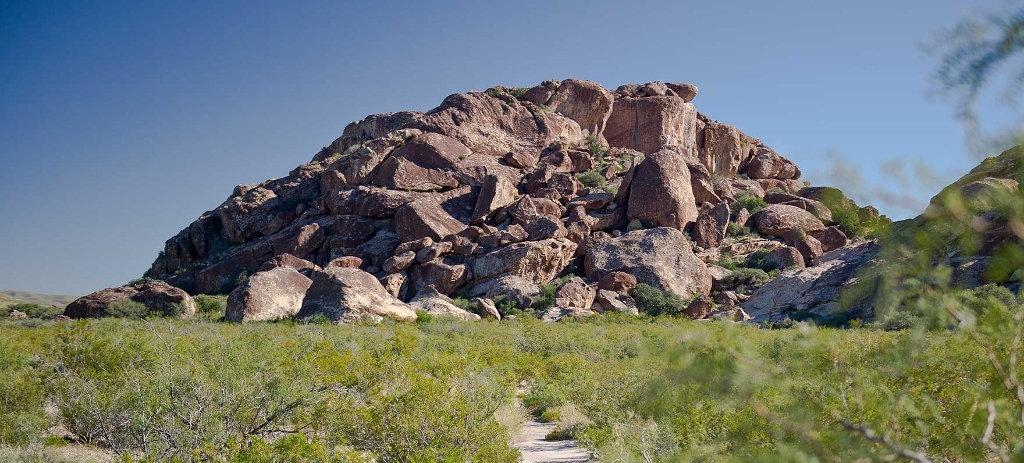
A unique geology and a relative abundance of water made the Hueco Tanks site a refuge for nature and humans for over ten thousand years. Formed thirty four million years ago when magma entered an older limestone formation and then cooled, the Hueco geology emerged as weather eroded away the limestone and carved the odd sculptural hoodoos seen today. Hollows, known as huecos, populated the rock surfaces, catching rainfall where microhabitats developed and supported a diversity of plants and animals.
The presence of water in this Chihuahuan Desert environment also drew humans following the end of the last ice age. Hunter-gatherers crossing the region found the huecos to be a reliable source of water, leaving designs painted on the rocks as they passed through. Many of these pictographs survive and perhaps the most compelling are those left by a group of people we call the Jornada Mogollon. Rather than just passing through, the Jornada hung around, occupying the Hueco site starting sometime around 1150 A.D. They built pithouse structures, planted simple crops, fashioned stone tools, and painted animals, birds, and large-eyed storm deities across the rock surfaces. The Jornada also painted more than two hundred “masks” or face designs, considered the largest known assemblage of pictographic “masks” in the country, beneath rock overhangs, within boulder shelters, and at other odd and hidden places throughout the site. This well-preserved (and protected) collection of pictographs is part of the Hueco Tanks State Park and Historic Site, administered by the Texas Parks and Wildlife Department, and can be seen on guided and self-guided tours. The Historic Site also offers camping, hiking, and some of the best bouldering and rock climbing in the state.
Is there something we missed for this itinerary?
Itineraries across USA


















































